
Naqshe Rostam
Naqsh-e Rostam 6 kilometres north of Persepolis is an ancient necropolis of four Persian kings from both the Achaemenid and Sassanid periods. These large tombs have been cut in to cliff face high above the ground. The facades of the tombs have been carved in the shape of cross. The entrance to each tomb is at the center of each cross.
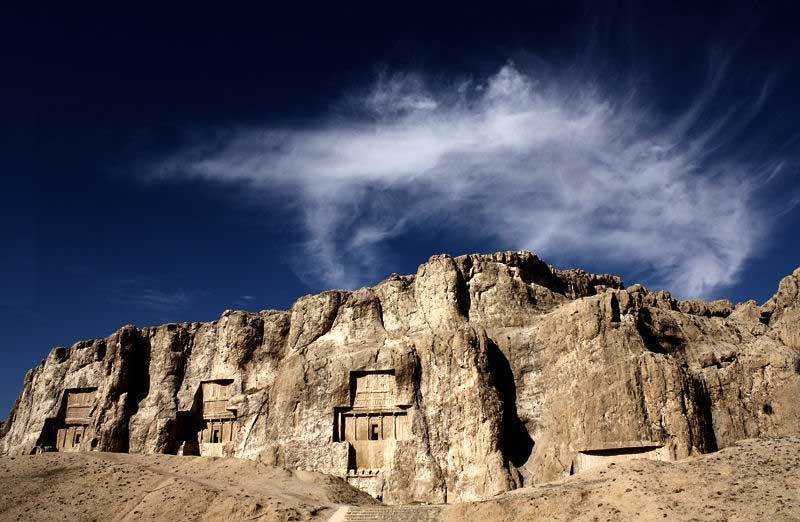
NaqshERostam Kalout Travel Agency
The Sassanian Rock Reliefs: Details of the Sassanians' Rock Reliefs. Sassanian kings chose Naqsh-e-Rostam as an ideal site to showcase their military victories, war scenes, and coronation ceremonies. The historical era under which Persian and Roman empires were entangled in several wars brought a lot of destruction, poverty, and other social.

Naqshe Rostam Photo Gallery Iran Travel and Tourism
Naqsh-e Rostam (lit. mural of Rostam, Persian: نقش رستم [ˌnæɣʃeɾosˈtæm]) is an ancient archeological site and necropolis located about 13 km northwest of Persepolis, in Fars Province, Iran.A collection of ancient Iranian rock reliefs are cut into the face of the mountain and the mountain contains the final resting place of four Achaemenid kings, notably king Darius the Great and.
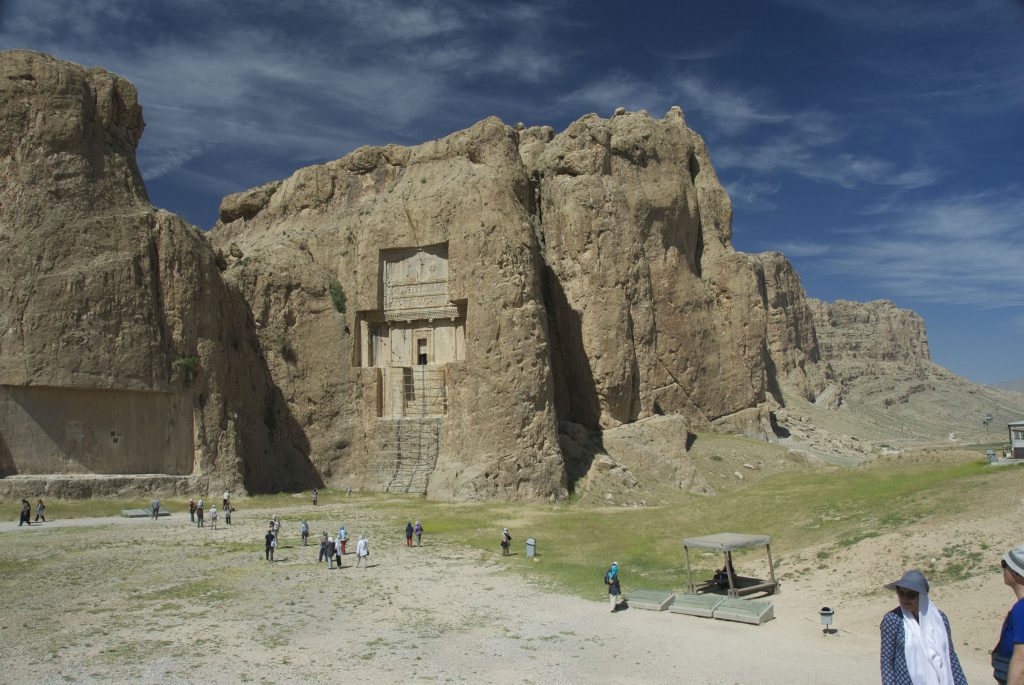
Naqshe Rostam Shiraz Iran Attractions IranOnTour
220. Naqsh-e Rustam is an impressive necropolis that stands as a reminder of the once famous and powerful Achaemenid Persian Empire, which thrived between 500 BC and 330 BC when it was defeated by.
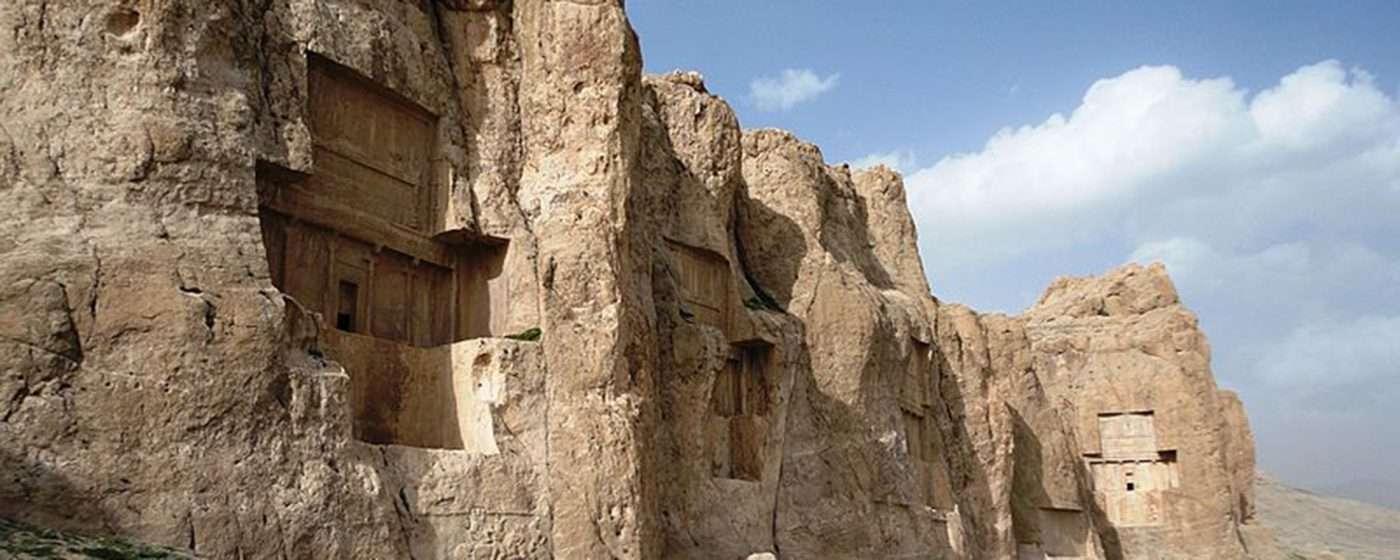
Naqshe Rostam Hogo Travel About tThe Necropolis of Naqshe Rostam
The Story of Naqsh-e Rostam. The history of Naghsh-e Rostam is long and amazing. It is reminiscent of Iran's 3 glorious eras: Elamite, Achaemenian and Sassanian. The cliff already included a rock relief from Elamite period when Achaemenids considered it a holy place and made it the eternal resting place of a couple of their kings.
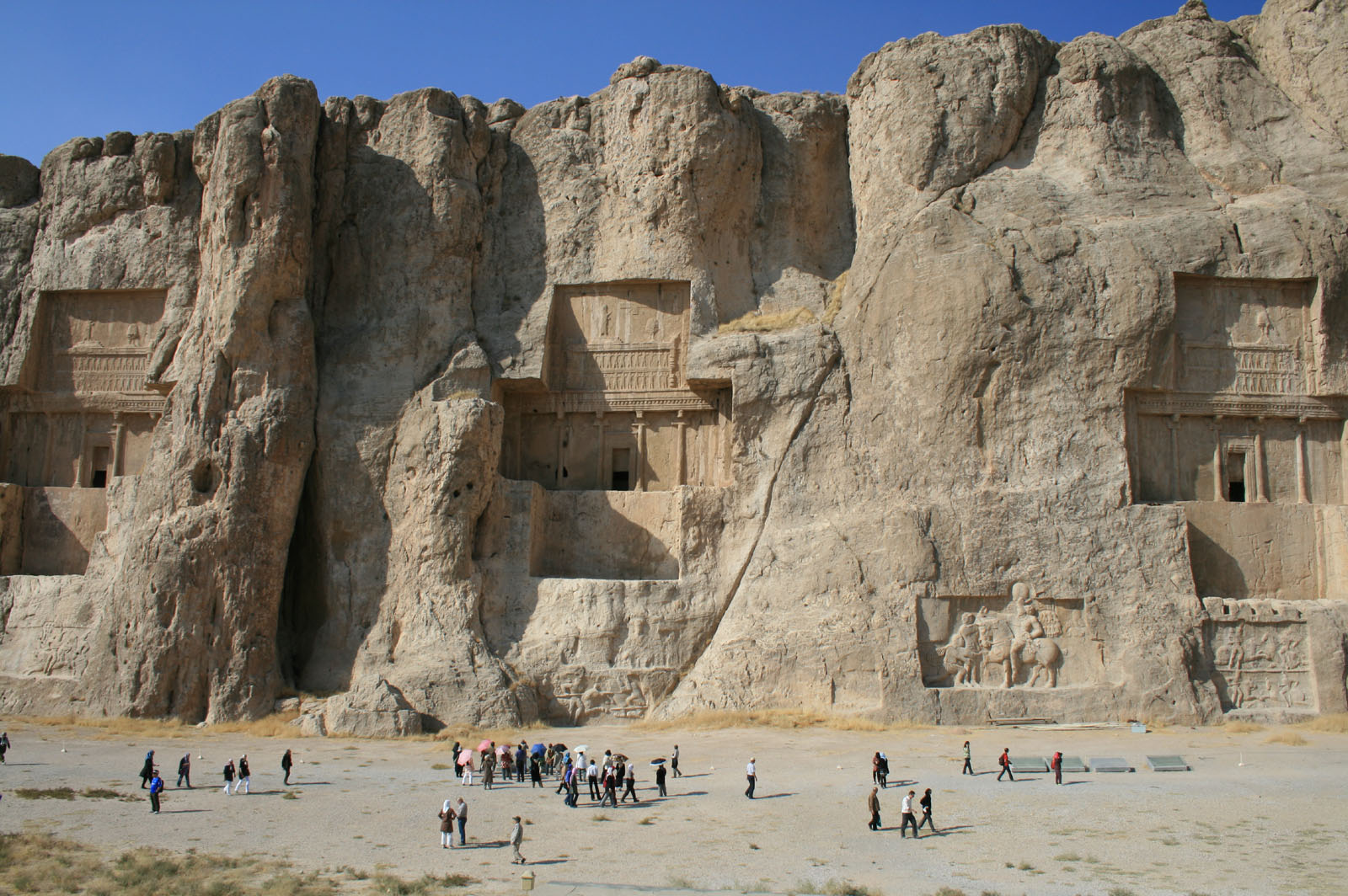
mother nature Naqshe Rostam (Necropolis)
Naqsh-e Rustam. The iconic necropolis of Naqsh-e Rostam is the museum of spectacular reliefs, and rock tombs from El a m i te to S a ss a n i d periods. Mostly known as the burial place of the Achaemenid kings, it is located about 6 kilometers north west of Persepolis.It comprises four rock tombs of the Achaemenid kings and their families, a cube-shaped building called Ka'beh Zartosht, and.
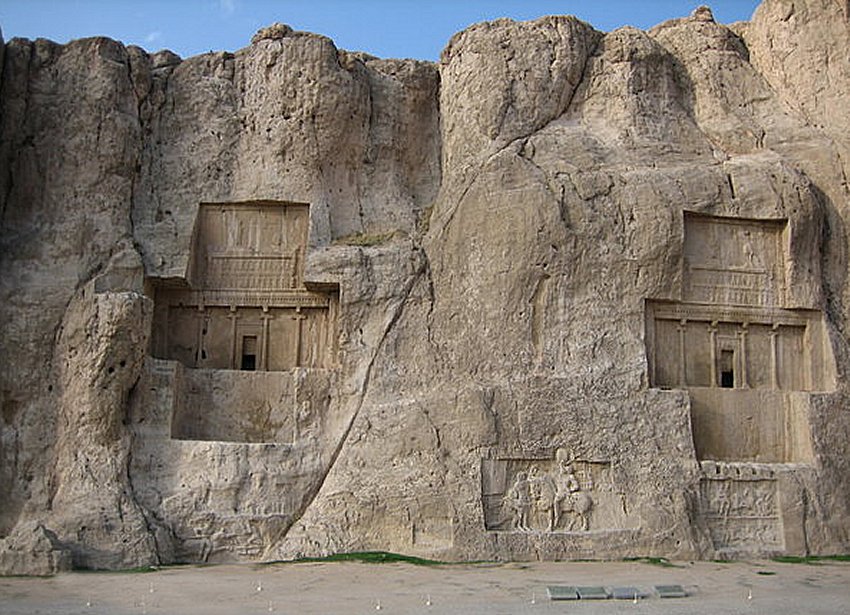
Naqshe Rostam Spectacular Tomb Complex With Rock Reliefs From Elamite
Naqsh-e Rostam stands as a timeless testament to the grandeur of the Achaemenid dynasty, bridging the chasm between ancient Persian glories and the present. Naqsh-e Rostam is a historical landmark that connects the modern and ancient worlds, and it is tucked away in Iran's southwest. This spectacular archaeological site, which serves as the.
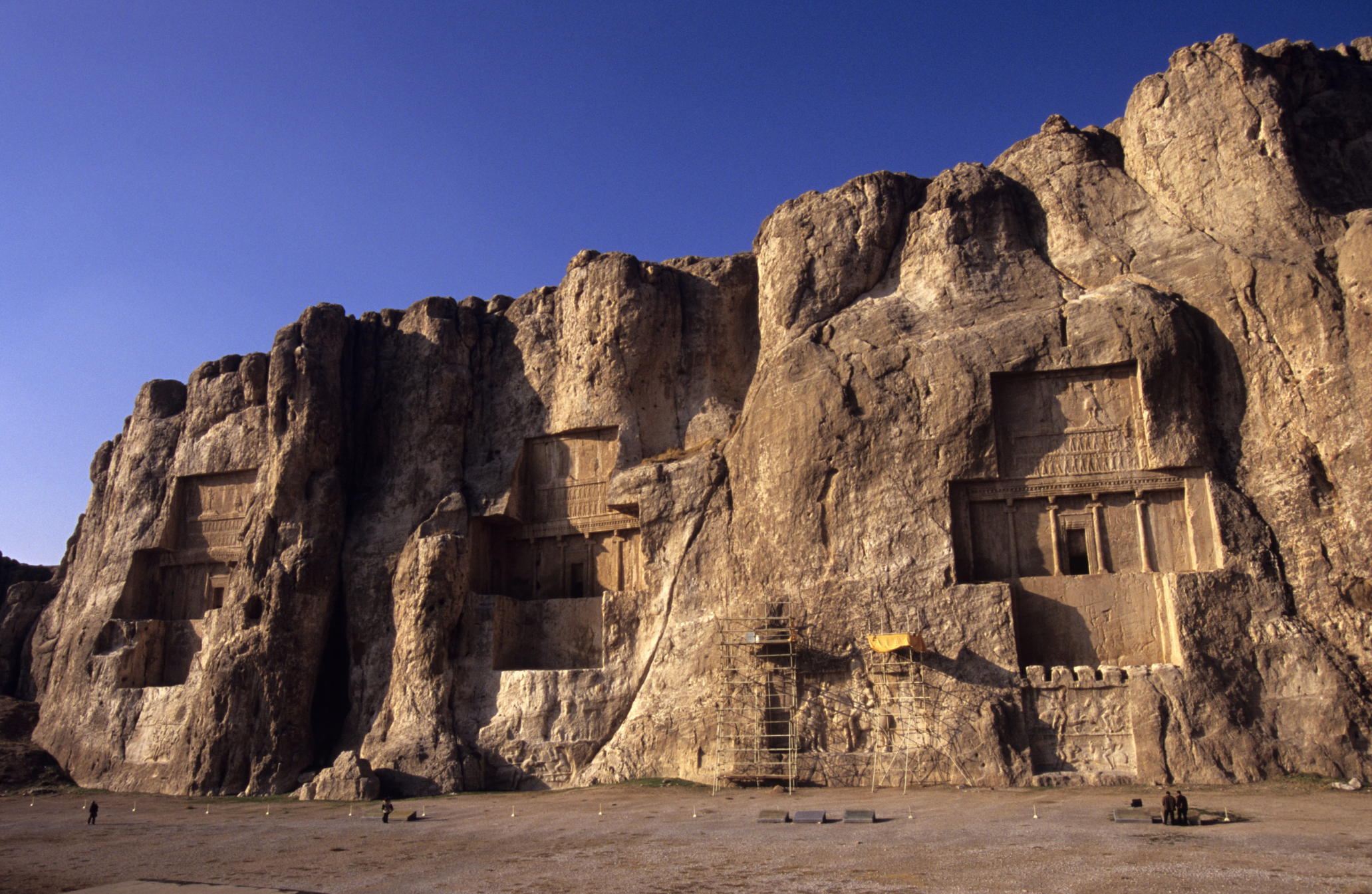
Naqshe Rostam Lonely
Naqsh-e Rostam is a great treasure placed in the heart of the mountains in the historic region of Marvdasht. It is a region with the glorious and eye-catching mountains showing an ancient grandeur. Embraced several monuments belonging to Elamite, Achaemenid and Sassanid eras, Naqsh-e Rostam owes indeed its reputation to four Achaemenid kings.

Naqshe Rostam An archaeological structure that completes Persepolis
Naqsh-e Rostam is an archaeological site located about twelve kilometers northwest of Persepolis, in the province of Fars in Iran.It is a necropolis that contains a group of Iranian rock reliefs carved into the cliff, both from the Achaemenid and Sassanid times. It is a few hundred meters from Naqsh-e Rajab, which contains another added group of Sassanid reliefs.

Naqshe Rostam Epiciran
History of Naqsh-e Rostam Naqsh-e Rostam is an ancient archaeological site with a rich history dating back over 3,500 years.There are works from the Elamite periods from 600 to 2000 BC, the Achaemenid period from 600 to 330 BC and the Sasanian period from 224 to 651 BC. which shows the strength of Iranian architecture before Islam. It is renowned for its remarkable rock-cut tombs and bas-reliefs.

Naqshe Rostam Shiraz Iran Attractions IranOnTour
Naqsh-e-Rostam. Image credit: Iran Chamber Society. Naqsh-e Rostam monument is a perpendicular wall of rock with four similar tombs, cut considerably from the bottom of the valley. The rock art below the tombs with sculptures from Elamite,.

Naqshe Rostam (Necropolis) Shiraz, Fars, Iran ⭐ IranOnTour
Palace of 100 Columns. 3.85 MILES. With an extravagant hall measuring almost 70 sq metres and supported by 100 stone columns, this palace formed one of two principal reception areas in…. View more attractions. The spectacular rock tombs at Naqsh-e Rostam are a must-see. Hewn out of a cliff high above the ground, the four tombs are believed to.

Photos of the travel to Iran Persepolis and Naqshe Rostam
中文. From Simple English Wikipedia, the free encyclopedia. Naqsh-e Rostam [ˌnæɣʃeɾosˈtæm]) is an ancient located about 12 km northwest of. , 1993, Penguin, 0670826995. Naqsh-e Rustam. 2012-02-27 at the. Lendering, Jona (2009). "Naqsh-i Rustam". Amsterdam: Livius.

Iran Travelogue 12 Naqshe Rostam, the City of Tombs
Naqsh-e Rustam (meaning Throne of Rustam) is located approximately 5 km (3 miles) to the northwest of Persepolis, the capital of the former Achaemenid (Persian) Empire in present day in Iran. Engraved on the façade of a mountain range considered sacred in the Elamite periods are the rock-cut tombs of Achaemenid rulers and their families dating.
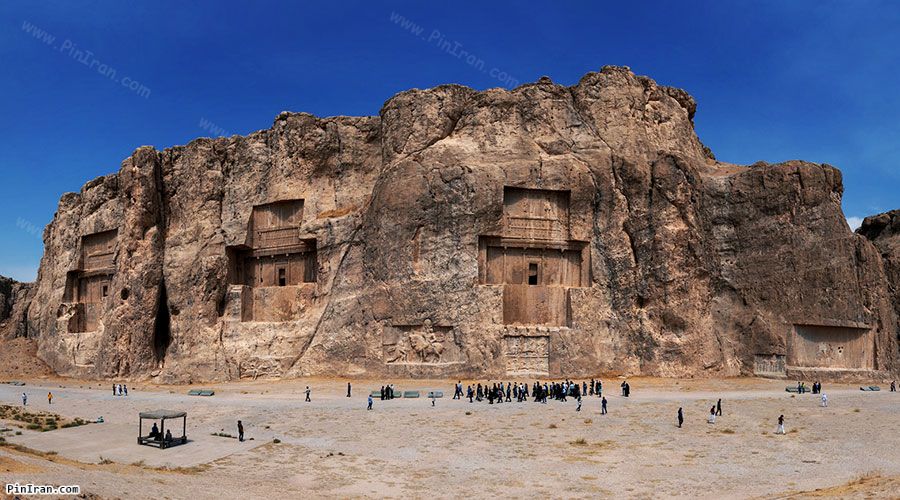
Naqshe Rostam, Ancient necropolis in Shiraz PinIRAN
Naqsh-e Rustam, is an ancient necropolis, located in the village of Zangi Abad, to the north of the city of Marvdasht in Fars province. This ancient site which is in a 6 km distance from Persepolis (Persian: Takht-e Jamshid), has been a home to ancient Iranian rock reliefs from Elamite, Achaemenid, and Sassanid periods. It lies a few hundred meters from Naqsh-e Rajab, with four further rock.

NaqsheRostam Putopis
Naqsh-e Rostam. Archaeological site near Marvdasht +16 More Photos. Naqsh-e Rustam is an ancient necropolis, located in the village of Zangi-Abad, to the north of the city of Marvdasht in Fars province. This ancient site which is in a 6 km distance from Persepolis (Takht-e Jamshid), has been a home to ancient Iranian rock reliefs from Elamite.